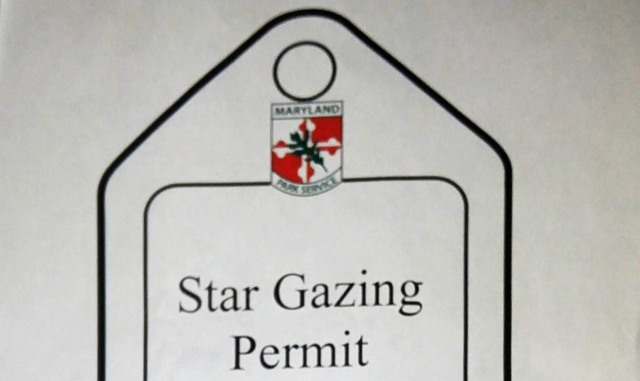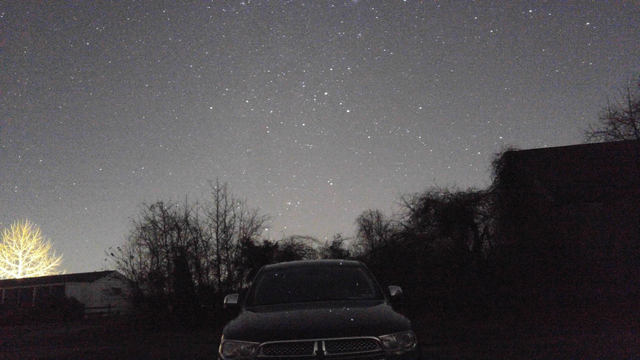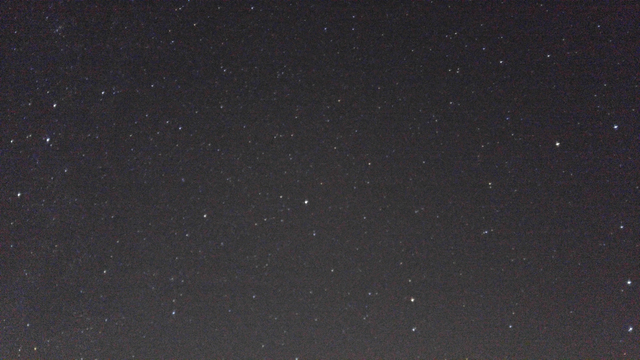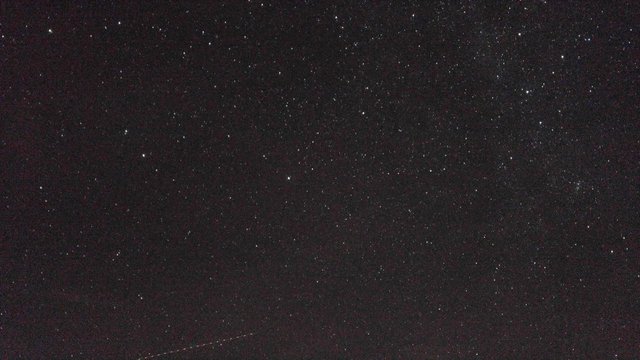Things to think about when planning a road trip for dark sky astronomy.
Living in the mid-Atlantic region of the United States makes it difficult to get decent views and photographs of the stars, so five steemizens in south-eastern PA have begun planning road trips for stargazing and to get photographs of the stars under darker skies. Yesterday was our second trip. (for some more info about our first trip, see The Striking Skies Above Cherry Springs). For more about light pollution, see: What's that on the Horizon?: A brief explanation on light pollution.
and Light Pollution.

Original photo by the the Steem Stargazing Team from south-eastern PA

The five of us were all set to go to Cherry Springs State Park yesterday for some dark-sky astronomy and photography. Unfortunately, it's a five hour drive, and the sky condition forecast for Cherry Springs included more clouds than any of us would have liked to see before committing to spending 10 hours in the car for the day. We had agreed on a go/no-go decision at 11am, but by 9:30 it was apparent that the night in Cherry Springs was expected to be a mix of clear, "mostly clear" and "partly cloudy" skies, so we started thinking about other options.
Of course, we could have risked it, or we could have postponed the trip, which was the original plan, but after some web searches we happened to notice that there is another dark-sky site about two hours away that had a forecast for clear weather conditions. The sky darkness wouldn't be quite as good, but that doesn't matter if the stars are obscured by clouds. One of us had already made other plans, so our number was down to four. The remaining road-trippers reclaimed a couple hours of our day, and later in the afternoon we headed off to Tuckahoe State Park in Queen Anne, Maryland.
Three of us are novice astronomers (@cmac, @cmp2020, and @remlaps). The fourth (@astronomyizfun) has been a hobbyist astronomer for several years. All four of us are photography novices. But we're having fun learning about this stuff one trip at a time.
I guess we'll all be writing about the trip and sharing some of our photos. As the driver and coordinating parent, one of the things I'm realizing is that for these trips to be a success, there is a lot to learn in addition to photography and astronomy. in this post, I'm going to start focusing on some of the logistics. I'll also talk about the bits and pieces that I'm learning about dark-sky cell phone astronomy. It's an interesting challenge because (1) you can't really practice effectively in between trips; and (2) you don't know how your pictures come out until you get home and see them on the computer.

Scheduling
You'll want to schedule your trip for a time when the moon is at a minimum, so it doesn't interfere with star visibility, and you'll schedule your departure time to arrive, roughly, around sunset. This information can be found on the web site timeanddate.com. Also, on our two trips, we've found that it has been effective to stop for dinner while enroute, somewhere close to the destination. (And yesterday, I had a Hardee's hot ham and cheese sandwich for the first time in 20+ years! That was a nice bonus.)
Trip Planning: What to bring
Of course your needs may vary, but here is the packing check-list that @cmp2020 and I used for yesterday's trip:
3 tripods
2 cell phone cameras
1 regular camera
1 tablet
1 reading glasses
2 red-lights
2 hats
2 gloves
2 neck-wraps
1 cooler w/ drinks
1 directions print-out
2 charging bricks
1 plug-in charging cable
1 usb cables for car
1 toilet paper
Also, @astronomyizfun brought a telescope, stand, cell phone adapter, and accessories. If you have a pair, you might also want to bring binoculars.
A couple of these items are worth discussing:
regular camera: The camera that I brought turned out to be worthless because I didn't know how to manually adjust ISO and shutter speeds (and it may not be possible). It had a "night portrait" and "night landscape" mode that I hoped would fit the bill, but they did not. You'll want to make sure that your camera can be adjusted to shoot in really dark conditions, and that you know how to do it.
red-lights Especially if there are going to be other people at your destination, you should use as little light as possible and only light with red lenses, because the red colored light doesn't cause the eye's pupil to narrow, so it won't impair anyone's ability to see under dark conditions when the light goes out again.
We haven't moved up to this level yet, but ideally, we should even cover phone and camera screens with some sort of red light filters.
tripods You're going to need shutter speeds from 10 to 30 seconds, so you won't be able to hold the camera still enough with your hands. A tripod is an absolute necessity if you're planning to take dark-sky star photos.
cell phone cameras You'll need a camera app that lets you adjust ISO and shutter speeds, and you'll need to know how to use it.
toilet paper In case of emergency. Most of these sites probably have "port-a-potties", but they might not be stocked.
Lesson Learned: Choose the location last
As described in the introduction, our plan was to go to Cherry Springs, and we hadn't considered any other possibility. This led to uncertainty and disappointment when the weather forecast was on the fence between good conditions and bad ones. What we found is that there are half a dozen and more dark sky locations within a 5 (or so) hour radius of our homes.
Including sites we've already visited, from our starting location, some possible sites are:
- Cherry Springs State Park (PA)
- French Creek State Park (PA)
- Sproul State Forest (PA)
- Raystown Lake (PA)
- Laurel Hill State Park (PA)
- Belleplain State Forest (NJ)
- Tuckahoe State Park(MD)
- Spruce Knob Mountain (WV)
We'll need to record travel distances and darkness scores for these sites - and others - and then on the day of the trip we can factor in distance, darkness and weather. Hopefully, that way our 11:00 am decision won't be go/no-go, but instead we'll merely need to choose a location.
Lessons Learned: Contact the destination

Original photo by the the Steem Stargazing Team from south-eastern PA
Open in new tab for better view.
The reflected starlight is pretty cool.

Open in new tab for better view.
The reflected starlight is pretty cool.
Once we settled on Tuckahoe, I called the park ranger's office to see if they could tell us where to park and how to find the best viewing areas. It was Saturday, so when I got voice mail, I didn't expect to hear back from anyone in time for our trip. Boy was I wrong!
I missed his name, but the park ranger was tremendously helpful. He called back, and told us where to park and find an open field for viewing, and he even called back when we hadn't arrived by 6pm to tell us where he'd be leaving our park astronomy permit, and offered to let us call back if we had any questions. We took him up on that and called back to make sure we were going the right way when our search for the park office seemed to last too long, and also to ask if there was any hunting in the vicinity. (we saw people with lights nearby and didn't want to get shot!)
Most of these trips will be on Saturdays, and you might think that you won't get hold of anyone on week-ends, but you never know until you try.
Lessons Learned: Not all dark skies are the same
Three of us went on our Cherry Springs trip last summer, @astronomyizfun, @cmp2020, and myself. On that trip, the only cell phone that could get decent pictures was mine, and the ideal settings seemed to be 2700 ISO with 15 or 30 second exposures.
I used ISO/2700 and 15 second shutter speeds last night at Tuckahoe, and my pictures are still much brighter than they were at Cherry Springs. I haven't seen @cmp2020's pictures on a computer yet, but from a comparison on our phones, it seems like his cell phone was capturing better images. His maximum ISO and shutter speed were ISO 800 with 10 second exposures. I look forward to comparing our pictures when he gets his uploaded.
As an example, here are photos of the north star, side by side, from Cherry Springs (left, ISO 2700, 30 sec) and Tuckahoe (right, ISO 2700, 15 sec)

Original photos by the the Steem Stargazing Team from south-eastern PA


Open in new tab for better view.


Conclusion
Each time we go, we learn a little more about how to make a trip successful. In this post, I posted some of the things we've learned about scheduling our trips, what to bring, choosing a location, and some tips to be able to get star photos with a cell phone or digital camera.
The rewards from this post are being divided evenly among the Steem Stargazing Team members who attended yesterday's road-trip: @astronomyizfun, @cmac, @cmp2020, and myself.
Thank you for your time and attention.
Sign up for your own Steem account with this invitation from busy.org - https://busy.org/i/@remlaps.
As a general rule, I up-vote comments that demonstrate "proof of reading".

Steve Palmer is an IT professional with three decades of professional experience in data communications and information systems. He holds a bachelor's degree in mathematics, a master's degree in computer science, and a master's degree in information systems and technology management. He has been awarded 3 US patents.

Steve is a co-founder of the Steemit's Best Classical Music Facebook page, and the @classical-music steemit curation account.
| Follow: @classical-music | Follow: @classical-radio | Classical Music discord invitation: https://discord.gg/ppVmmgt |  Classical Music Logo by ivan.atman Classical Music Logo by ivan.atman |


I've never been properly star having! I'm jealous! There was once that I took our nieces out to see the meteor showers in Australia, but they were interested in the hot chocolate and marshmallows...
In the Netherlands, it seems like it would be too bright... But maybe one time, I'll take a trip up to the north Scandanavian countries to see the stars and the northern lights!
Downvoting a post can decrease pending rewards and make it less visible. Common reasons:
Submit
It's actually turning out to be pretty fun. We were especially lucky when we caught the Perseid meteor shower and new moon on the same night at Cherry Springs last August.
I would love to see the northern lights. They say you can see them from Pennsylvania sometimes, but I've been here my whole life, and I've never been able to.
Downvoting a post can decrease pending rewards and make it less visible. Common reasons:
Submit
I think I just read that the US is supposed to be having a complete lunar eclipse soon? I guess Canada is the closer option for you to see the Northern Lights!
Downvoting a post can decrease pending rewards and make it less visible. Common reasons:
Submit
Cool. Thanks for the tip! I didn't know that, but you're right - https://www.timeanddate.com/eclipse/next-lunar-eclipse.html. January 20-21. If I'm reading the chart right, it will be totally visible in N. America, S. America, and a small part of Europe. And most of it, except penumbral phases will be visible in part of Africa and most of Europe, too.
I hope the skies are clear. It will be cool to get a photo series during the eclipse.
Downvoting a post can decrease pending rewards and make it less visible. Common reasons:
Submit
Thanks for the site, I looked it up and it we do get it in Den Haag as well! Now to see if I can accidentally wake up my daughter to go out and watch the moon in the wee hours of the morning!
Downvoting a post can decrease pending rewards and make it less visible. Common reasons:
Submit